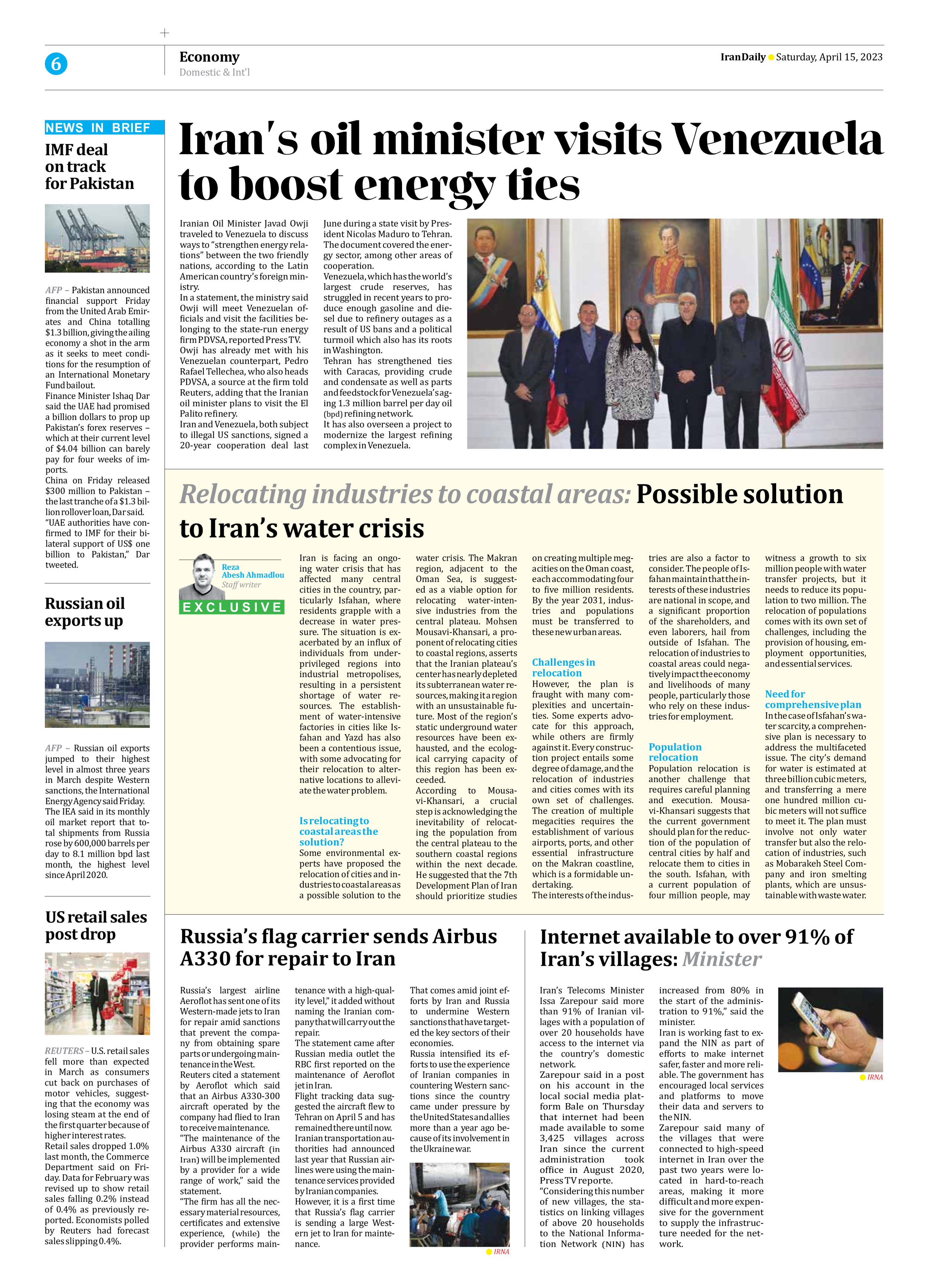
Relocating industries to coastal areas: Possible solution to Iran’s water crisis
Reza Abesh Ahmadlou
Staff writer
Iran is facing an ongoing water crisis that has affected many central cities in the country, particularly Isfahan, where residents grapple with a decrease in water pressure. The situation is exacerbated by an influx of individuals from underprivileged regions into industrial metropolises, resulting in a persistent shortage of water resources. The establishment of water-intensive factories in cities like Isfahan and Yazd has also been a contentious issue, with some advocating for their relocation to alternative locations to alleviate the water problem.
Is relocating to coastal areas the solution?
Some environmental experts have proposed the relocation of cities and industries to coastal areas as a possible solution to the water crisis. The Makran region, adjacent to the Oman Sea, is suggested as a viable option for relocating water-intensive industries from the central plateau. Mohsen Mousavi-Khansari, a proponent of relocating cities to coastal regions, asserts that the Iranian plateau’s center has nearly depleted its subterranean water resources, making it a region with an unsustainable future. Most of the region’s static underground water resources have been exhausted, and the ecological carrying capacity of this region has been exceeded.
According to Mousavi-Khansari, a crucial step is acknowledging the inevitability of relocating the population from the central plateau to the southern coastal regions within the next decade. He suggested that the 7th Development Plan of Iran should prioritize studies on creating multiple megacities on the Oman coast, each accommodating four to five million residents. By the year 2031, industries and populations must be transferred to these new urban areas.
Challenges in relocation
However, the plan is fraught with many complexities and uncertainties. Some experts advocate for this approach, while others are firmly against it. Every construction project entails some degree of damage, and the relocation of industries and cities comes with its own set of challenges. The creation of multiple megacities requires the establishment of various airports, ports, and other essential infrastructure on the Makran coastline, which is a formidable undertaking.
The interests of the industries are also a factor to consider. The people of Isfahan maintain that the interests of these industries are national in scope, and a significant proportion of the shareholders, and even laborers, hail from outside of Isfahan. The relocation of industries to coastal areas could negatively impact the economy and livelihoods of many people, particularly those who rely on these industries for employment.
Population relocation
Population relocation is another challenge that requires careful planning and execution. Mousavi-Khansari suggests that the current government should plan for the reduction of the population of central cities by half and relocate them to cities in the south. Isfahan, with a current population of four million people, may witness a growth to six million people with water transfer projects, but it needs to reduce its population to two million. The relocation of populations comes with its own set of challenges, including the provision of housing, employment opportunities, and essential services.
Need for comprehensive plan
In the case of Isfahan’s water scarcity, a comprehensive plan is necessary to address the multifaceted issue. The city’s demand for water is estimated at three billion cubic meters, and transferring a mere one hundred million cubic meters will not suffice to meet it. The plan must involve not only water transfer but also the relocation of industries, such as Mobarakeh Steel Company and iron smelting plants, which are unsustainable with waste water.







